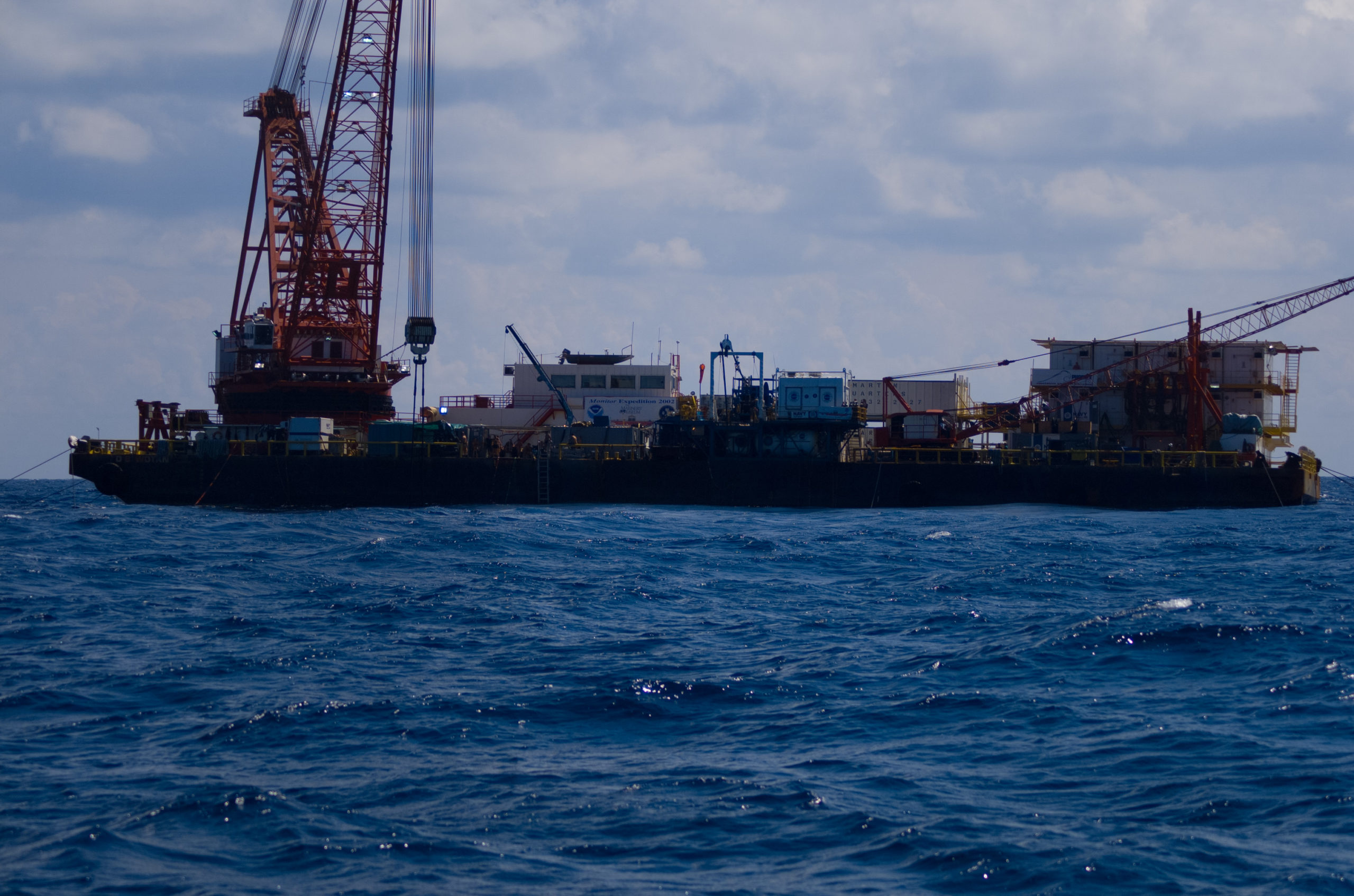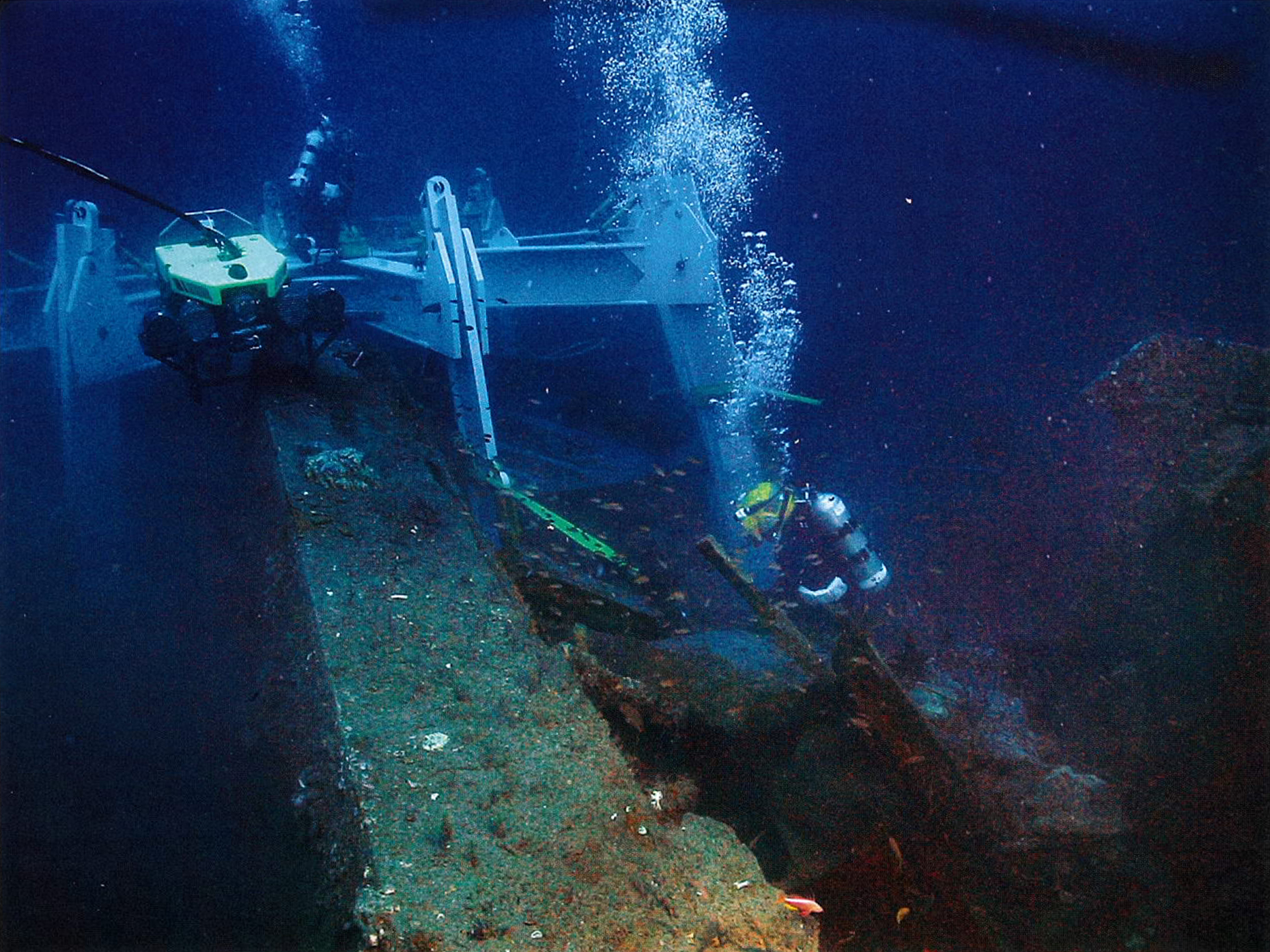On December 31, 1862, USS Monitor was caught in a storm and sank 16 nautical miles off Cape Hatteras, North Carolina, in more than 230 feet of water. It is believed the vessel went down stern first, turning over so that its revolutionary 120-ton revolving gun turret separated and became pinned under the ship on the seafloor. Monitor’s remains were discovered in 1973, confirmed in 1974, and in 1975 the wreck was placed under the jurisdiction of the National Oceanic and Atmospheric Administration (NOAA) with the establishment of the Monitor National Marine Sanctuary.
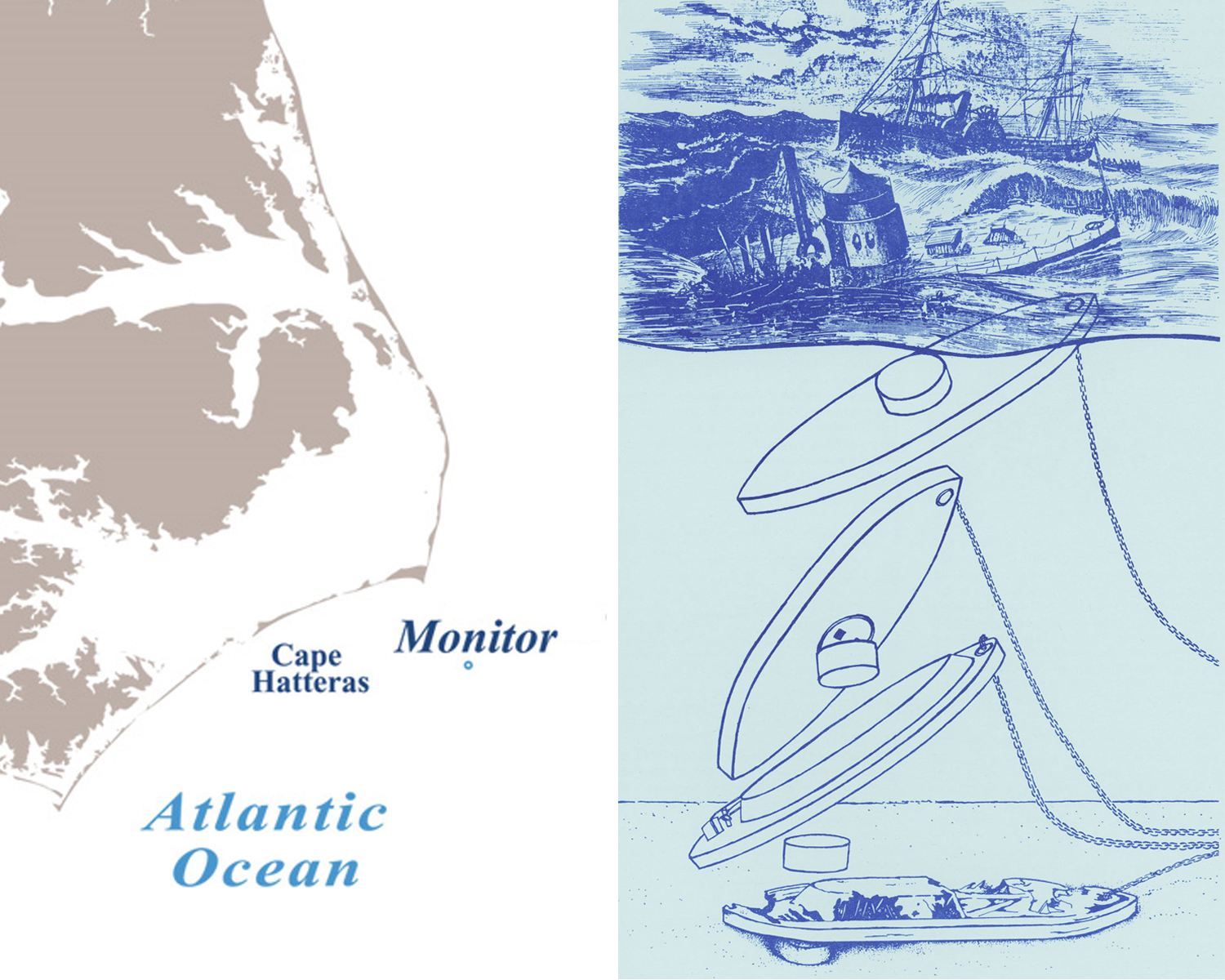
Archaeological investigations and recovery of small objects began in the 1970s and into the early 1980s. The first artifact found was the turret’s red signal lantern – the last thing the crew saw before the ship sank beneath the waves! Other artifacts recovered included wood fragments, a glass jar full of relish, and Monitor’s anchor. In 1987, recognizing these artifacts needed a home, The Mariners’ was designated as the repository for their management and curation.
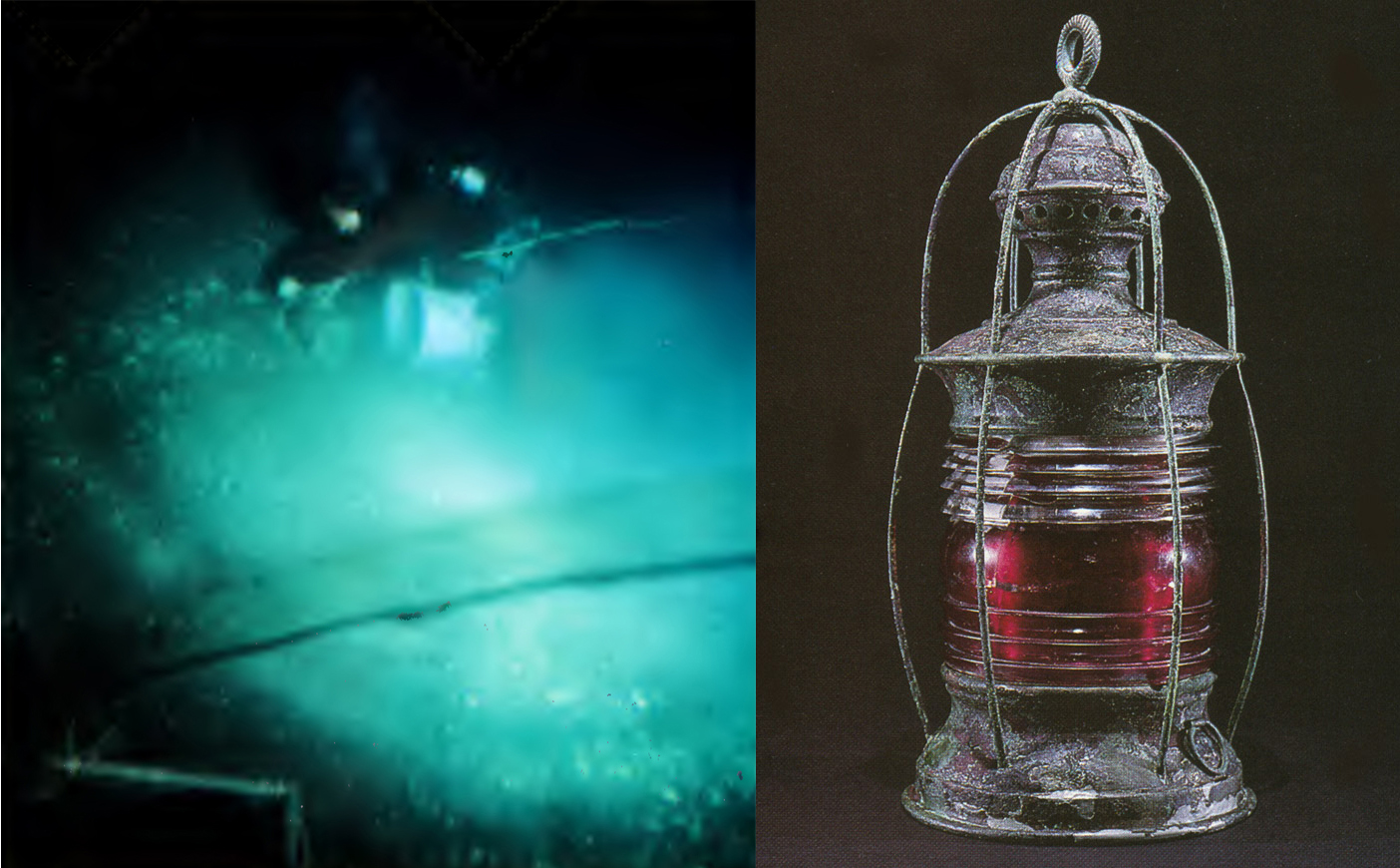
By the late 1990s, NOAA archaeologists determined that Monitor was in an advanced state of deterioration. A major recovery effort was planned in partnership with the US Navy to retrieve the ship’s most significant artifacts, culminating in retrieving the turret. Due to this massive object resting underneath the aft portion of the vessel, a multi-phase plan was developed to raise the engineering section first, followed by removing a section of armor belt over the turret, enabling it to be retrieved.

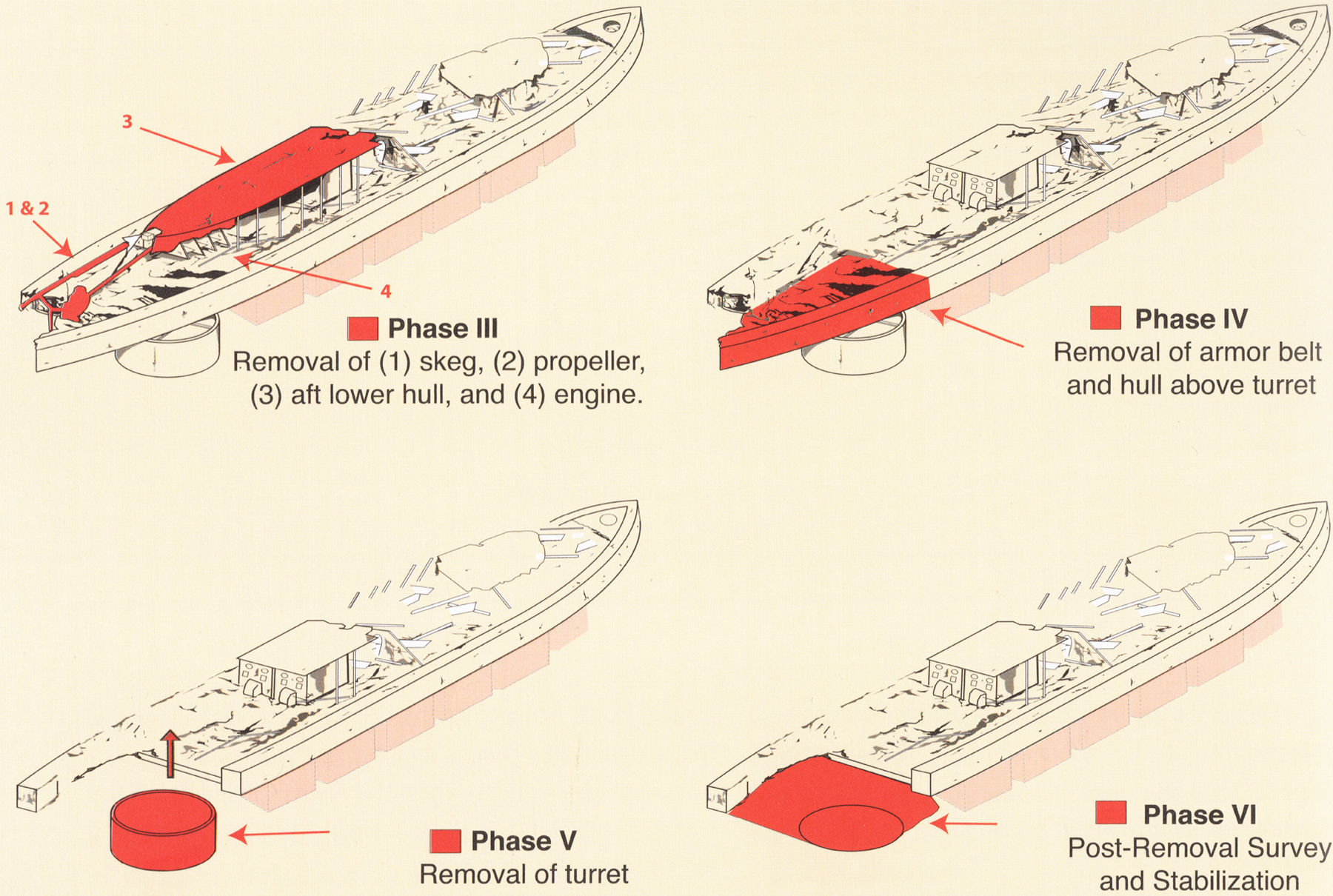
Between 1998 and 2001, nearly the entirety of Monitor’s engine room was excavated and transferred to the Museum. Objects included the propeller and 30-foot shaft, 25-foot skeg assembly (supported propeller and rudder), the 24-ton steam propulsion engine and its supporting bulkheads, hull fragments and other structural members, four additional steam engines, steam lines, plumbing, stairs, railings, the propulsion engine throttle and reversing wheel, engine room flooring, and the steam condenser.
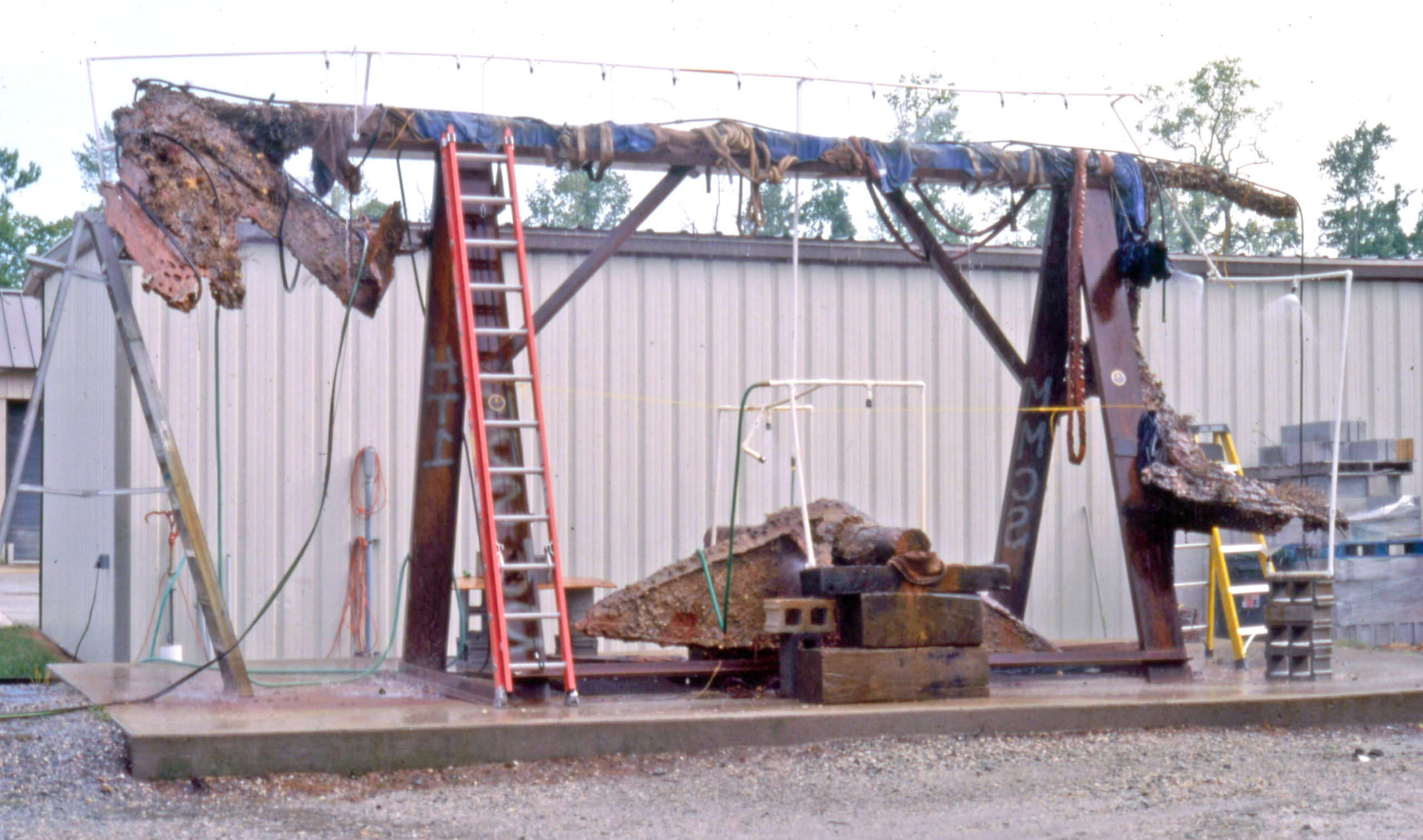
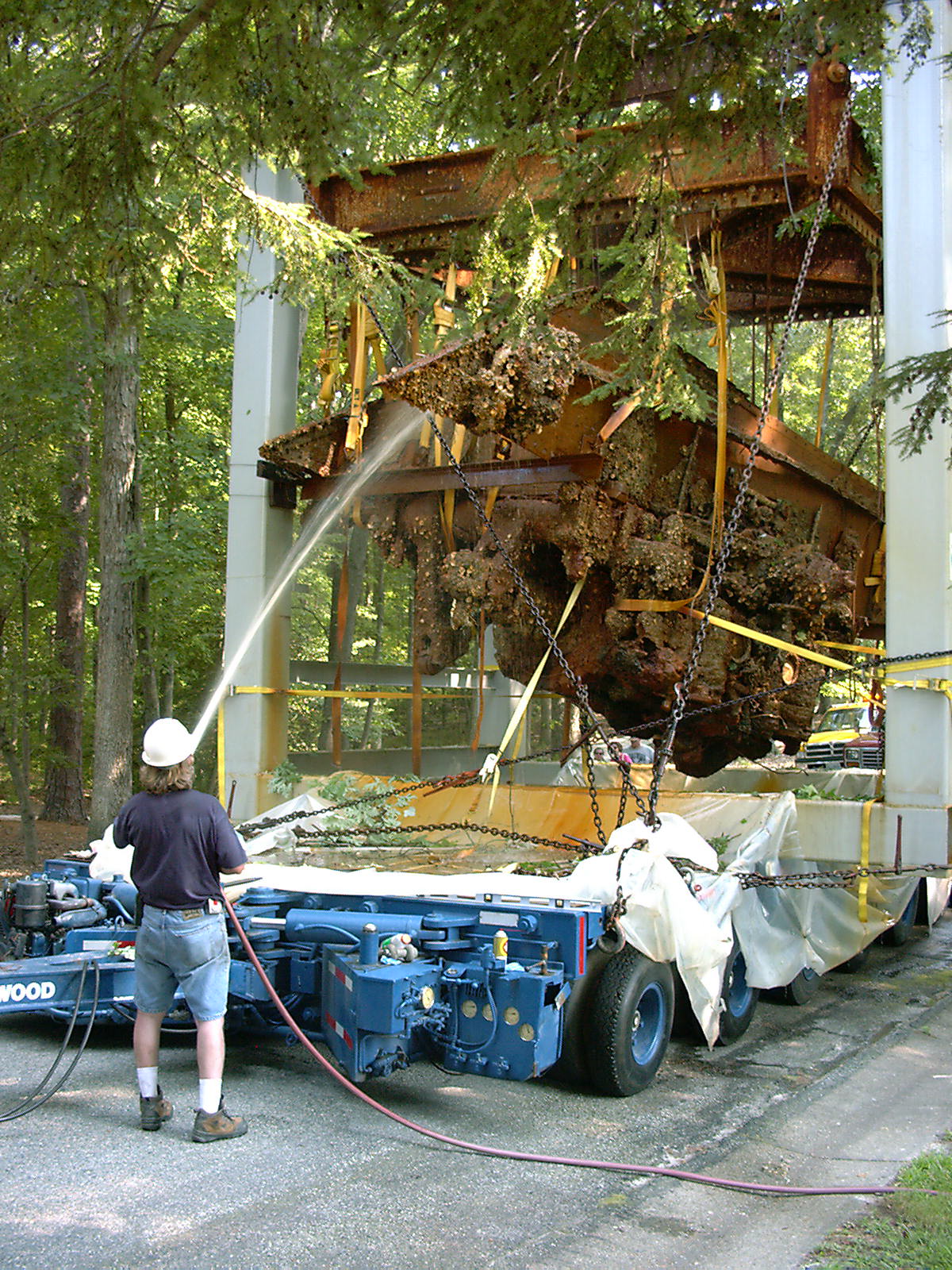
Starting in mid-summer of 2002, a team consisting of members from NOAA, US Navy, Harbor Branch Oceanic Institute, East Carolina University, The National Undersea Research Center/University of North Carolina at Wilmington, and The Mariners Museum and Park began work to recover the turret. The plan called for a barge-mounted crane that would lower an articulated eight-legged apparatus (dubbed the “spider”) over the turret, which would lock around it, enabling it to be lifted.
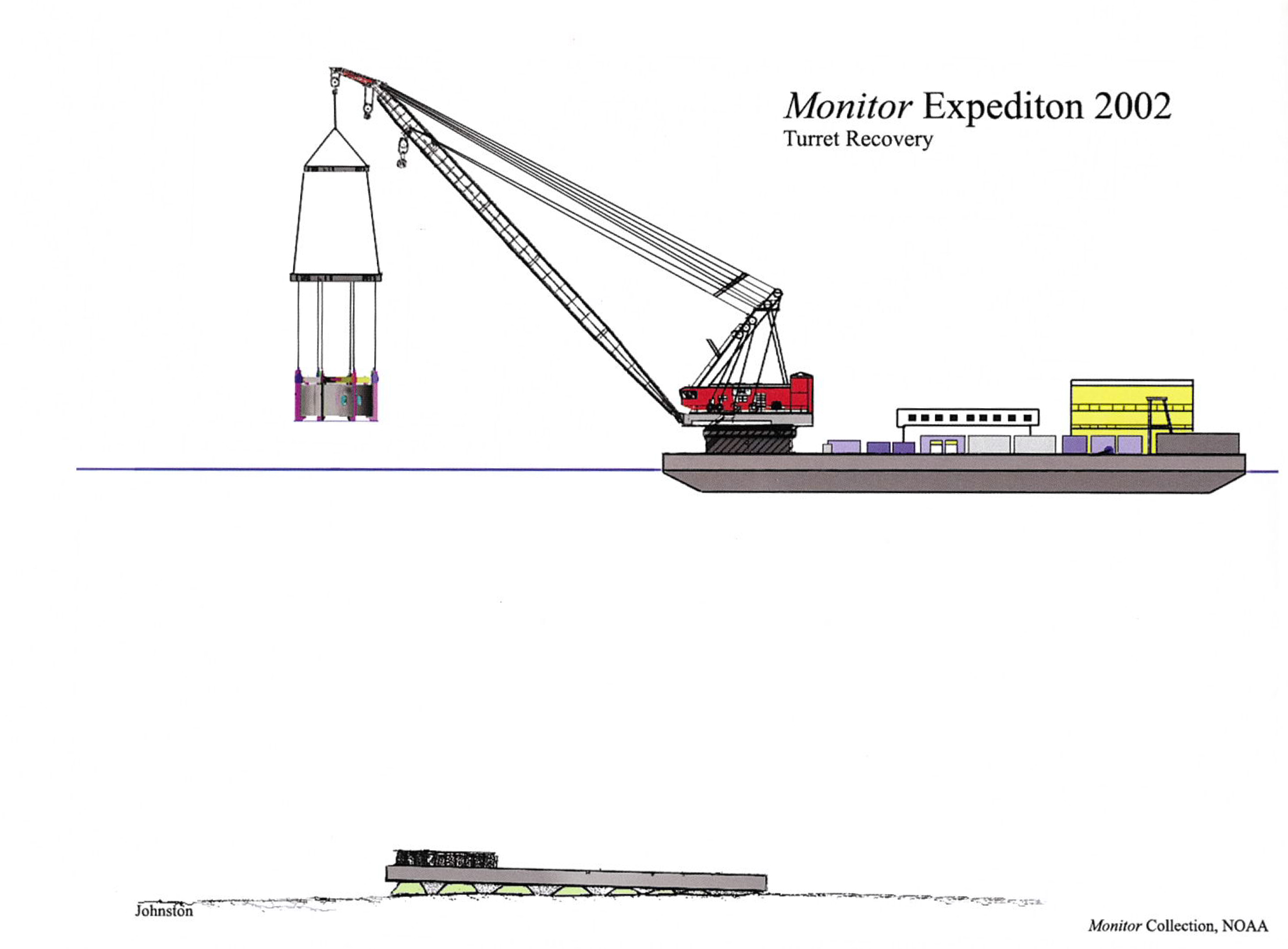
Due to the turret being upside-down, the weight of all artifacts and marine debris within it rested on its roof, which was not designed to handle it all. Therefore, once in the spider, the iconic object would be picked up slightly off the seafloor and set onto a lower support pad which would then be affixed to the spider, creating an “artifact Oreo. ”This would ensure no objects would be lost as the turret was brought up. SEE video.
On June 26, 2002, the derrick barge Wotan with its crane, established an 8-point mooring over Monitor’s wreck site. Shortly after, divers began removing tons of coal and debris covering the turret as well as resumed cutting a 45-foot section of armor belt resting on the turret they had started cutting the previous year. On July 5, the armor belt section was separated, and divers began clearing debris around the turret and excavating inside it. This work aimed to clear space around the artifact to enable the spider to come down over it and to lessen its overall weight. The turret was full of sediment, which was carefully sucked out through hoses to the surface. There it could be inspected by archaeologists on the barge above. On July 12, excavations in the turret exposed Monitor’s two XI-inch Dahlgren shell guns and their carriages.
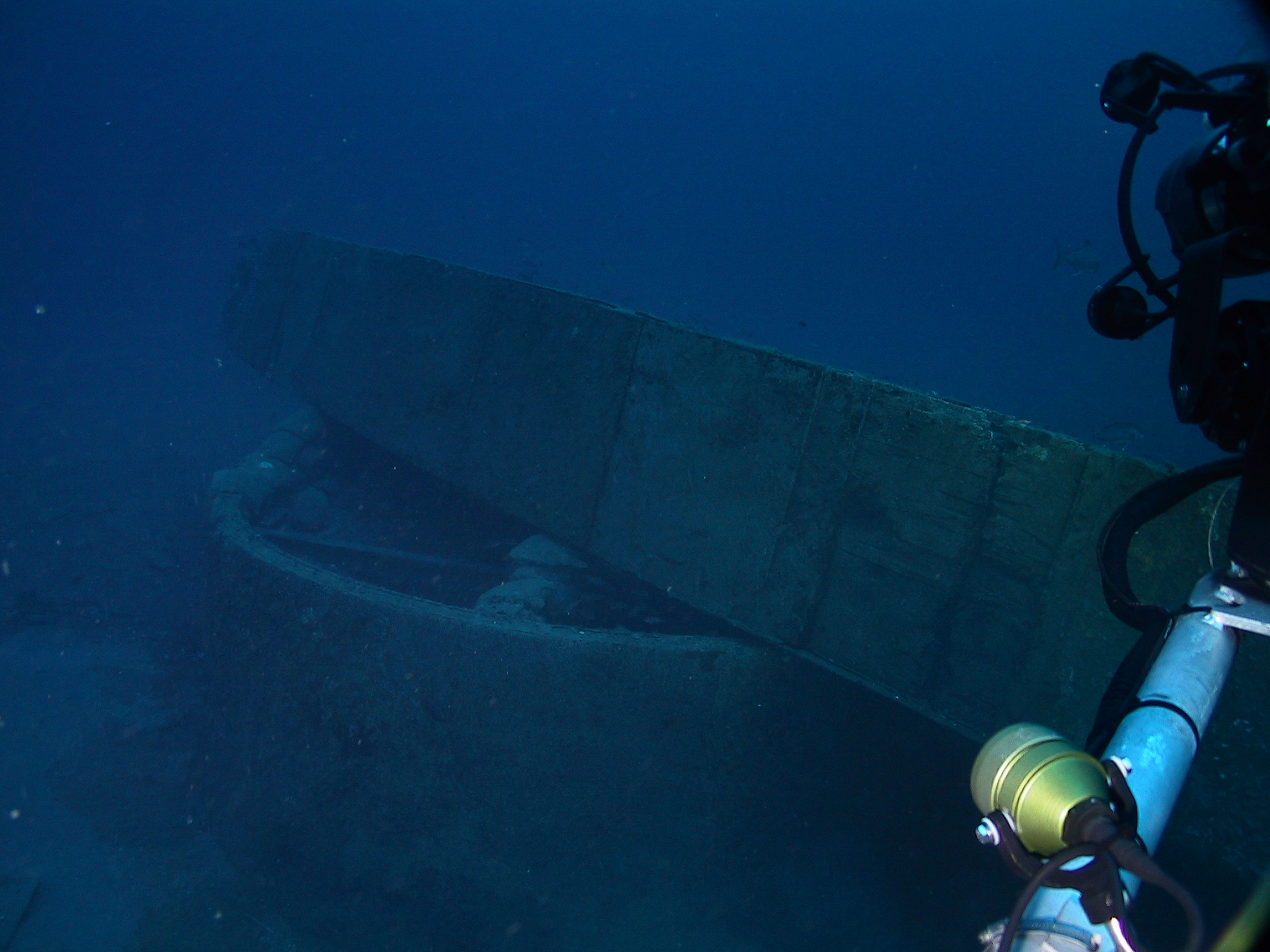
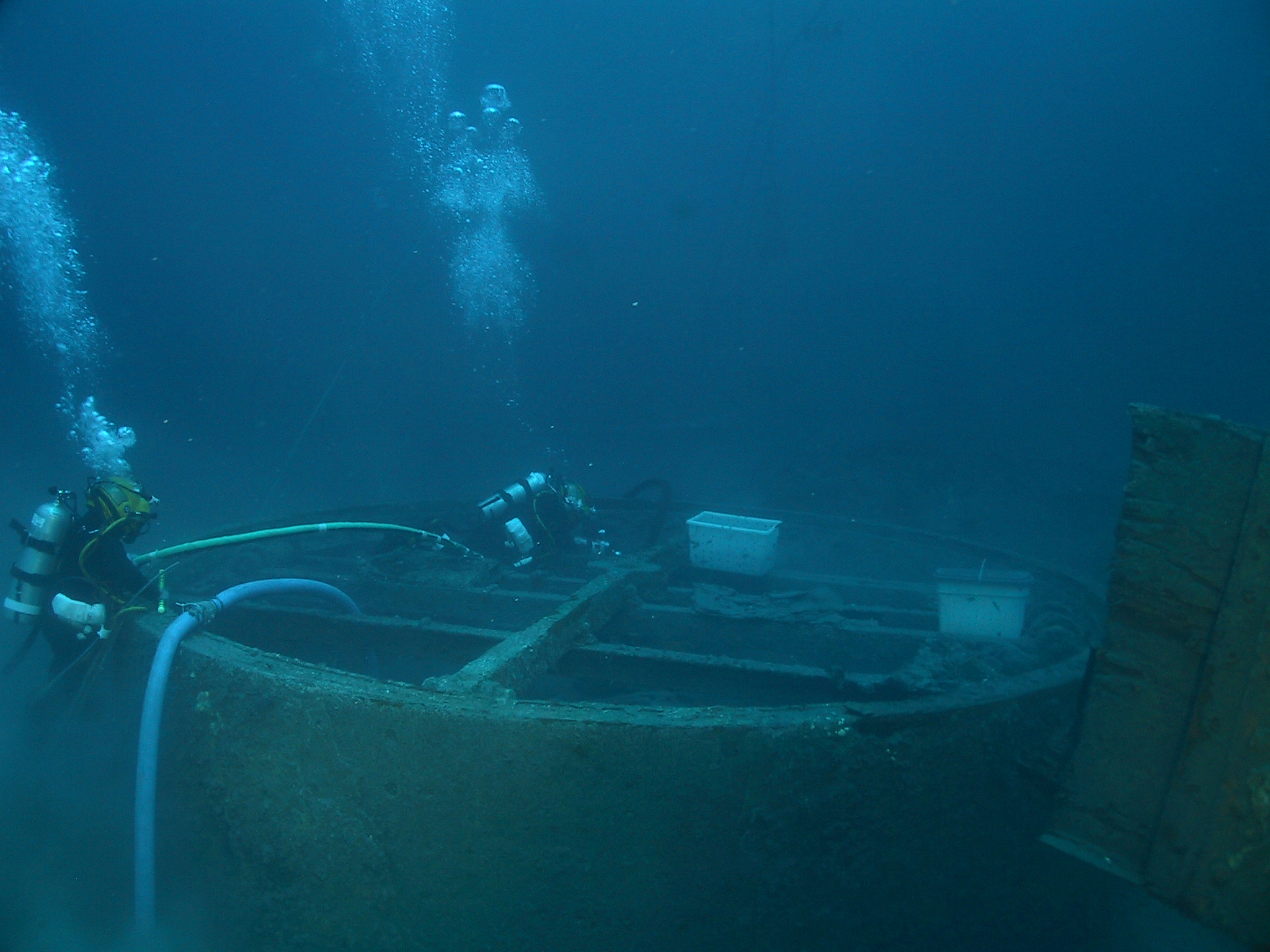
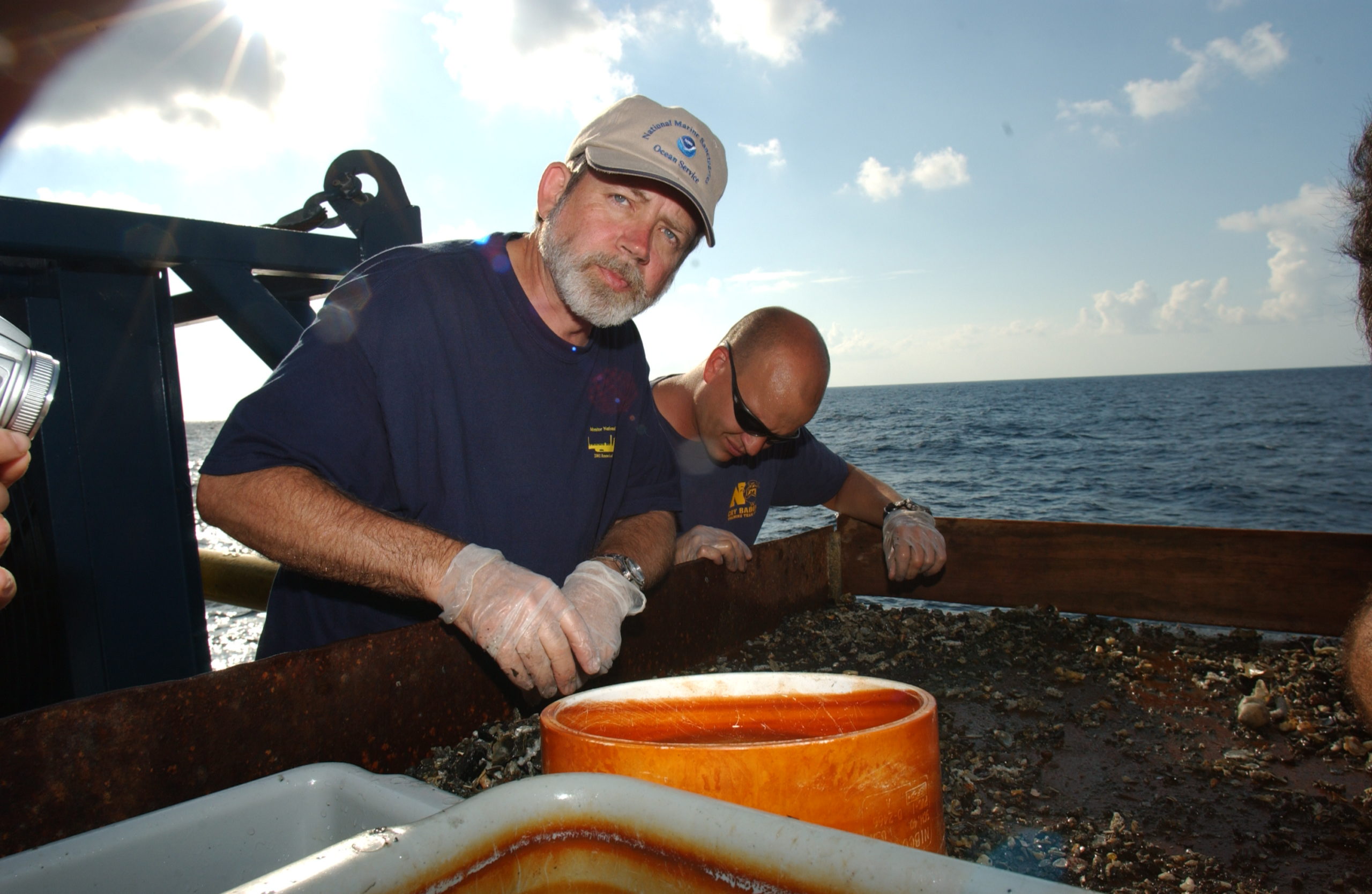
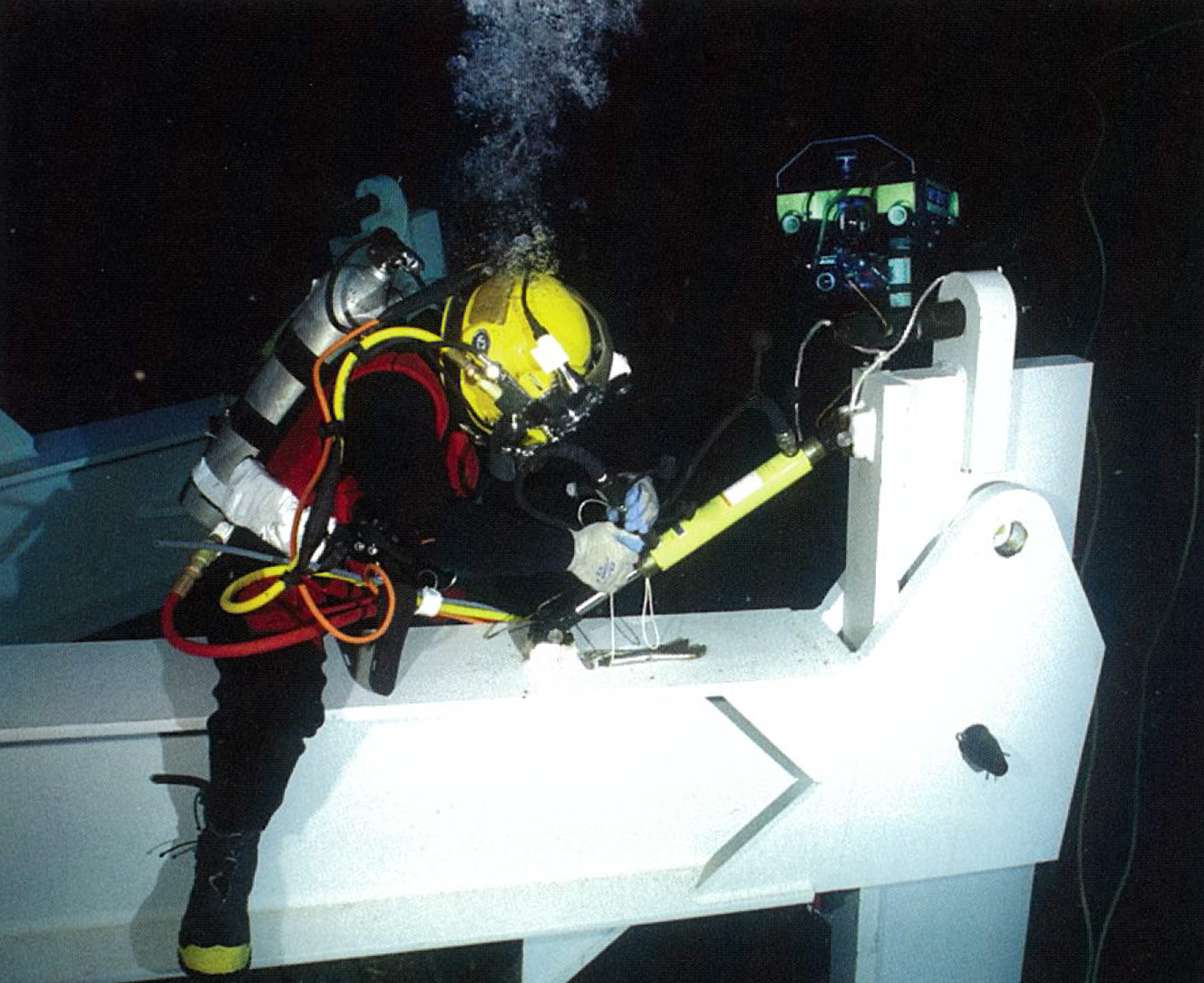
Most importantly, on July 26, human remains were found adjacent to the starboard gun. Although not expected, this was not surprising either, as 16 sailors lost their lives during the sinking. The discovery profoundly impacted the team and brought home the importance of the work and why they were doing it: to tell the stories of the crew and the legendary ironclad. On August 5, at 5:47 p.m., Monitor’s turret broke the surface of the Atlantic Ocean and was above water for the first time in 140 years!
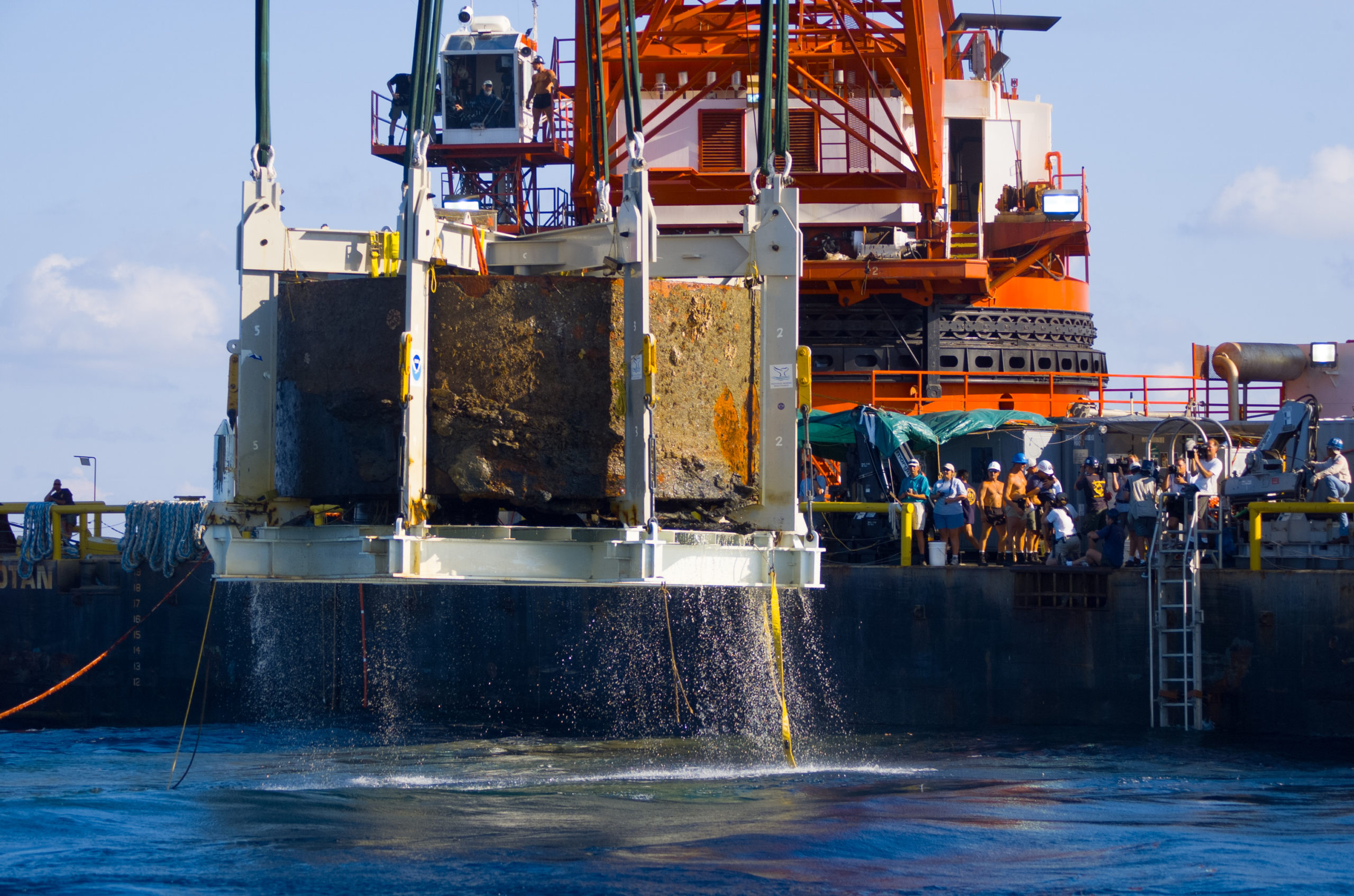
Four days later, the D.B. Wotan, carrying the turret, was escorted by USS Chinook, NOAA research vessel Ronald Brown, and a host of pleasure craft. As the small flotilla passed Fort Monroe at Old Point Comfort, Virginia, the US Army fired a 21-gun salute with field cannons. On August 10, the turret arrived at The Mariners’ Museum and Park, where it was transferred to a flatbed truck and rolled into its storage and treatment tank to begin its conservation. And so began the next chapter in USS Monitor’s history.
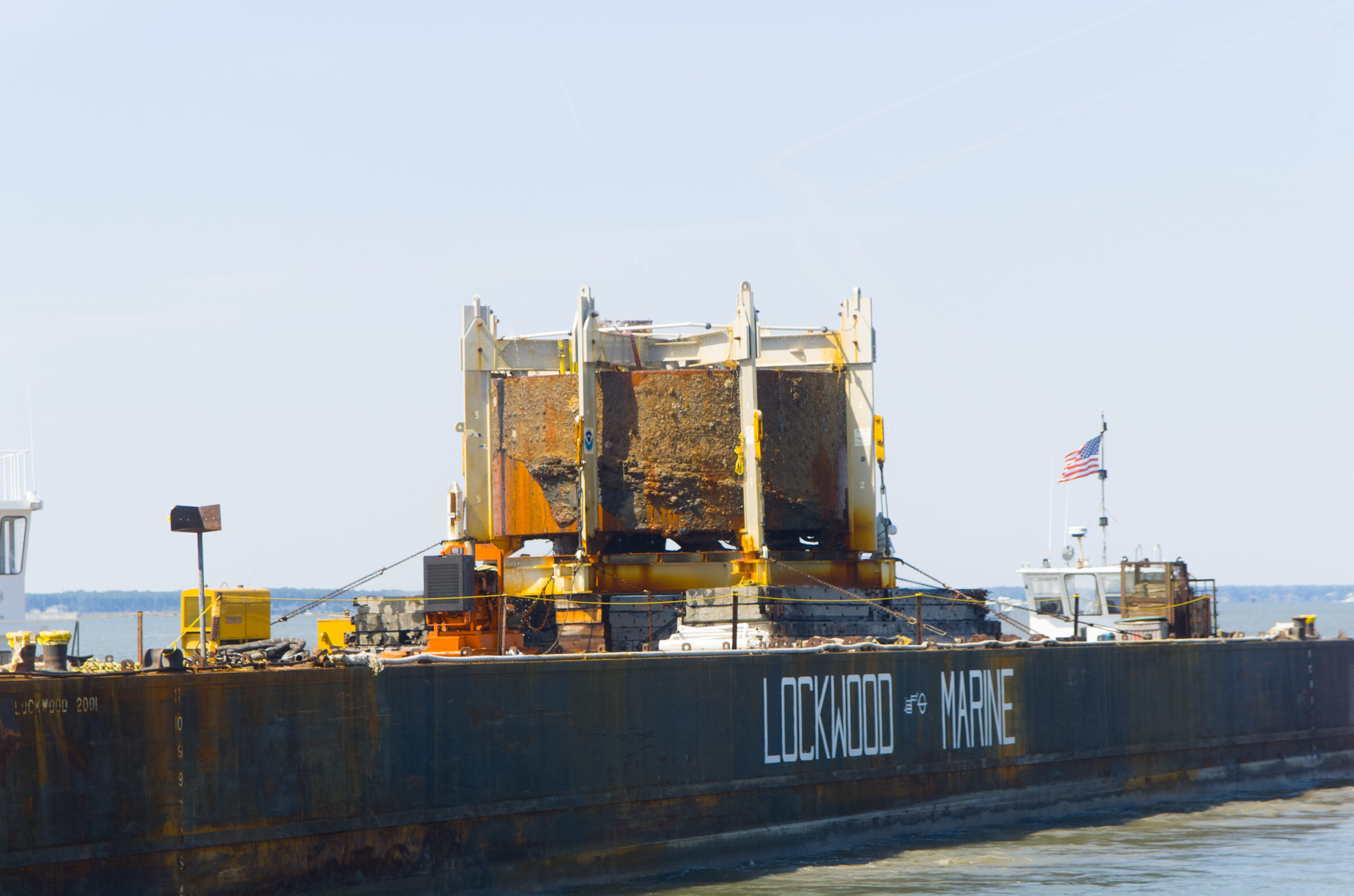
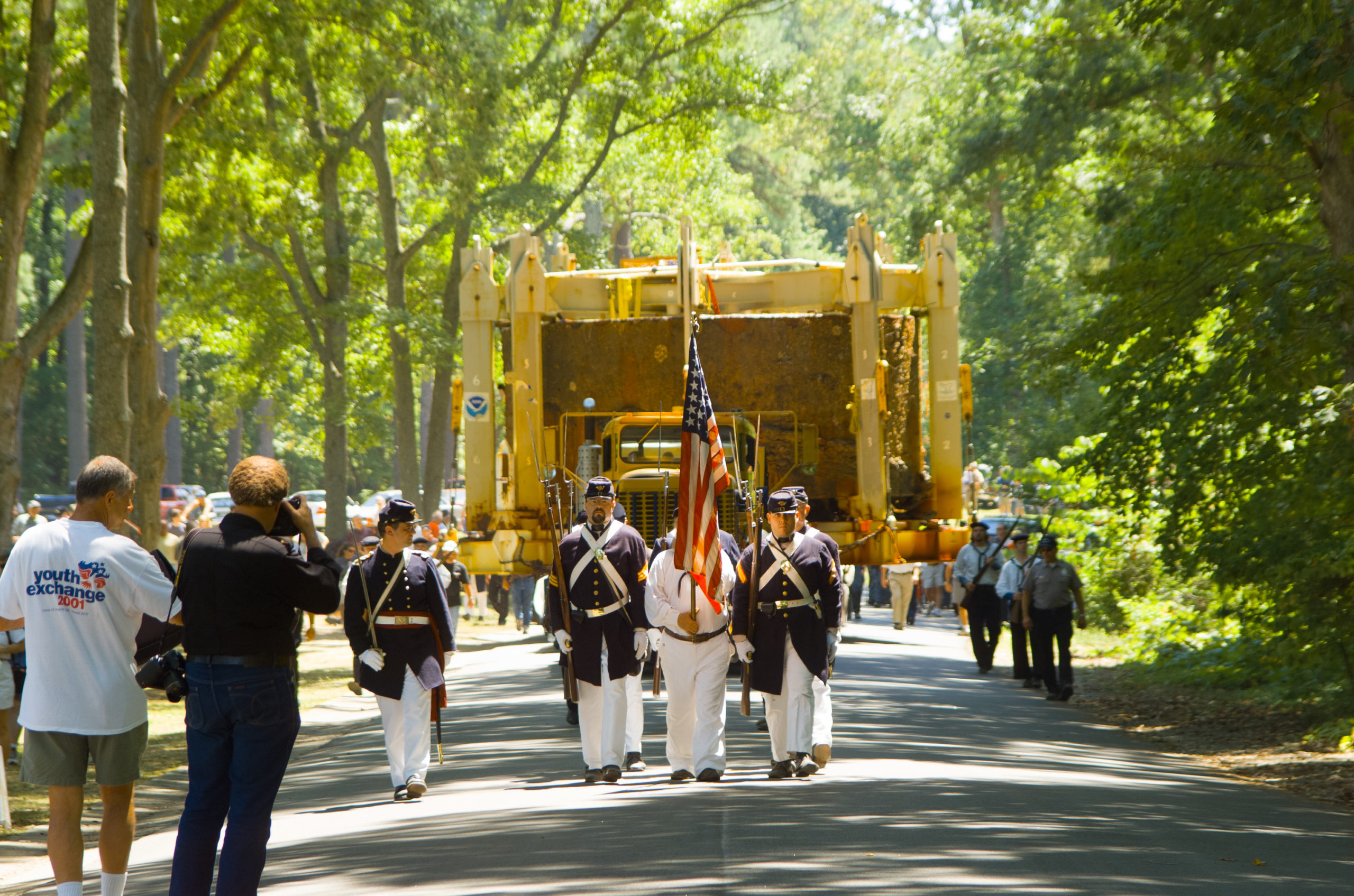
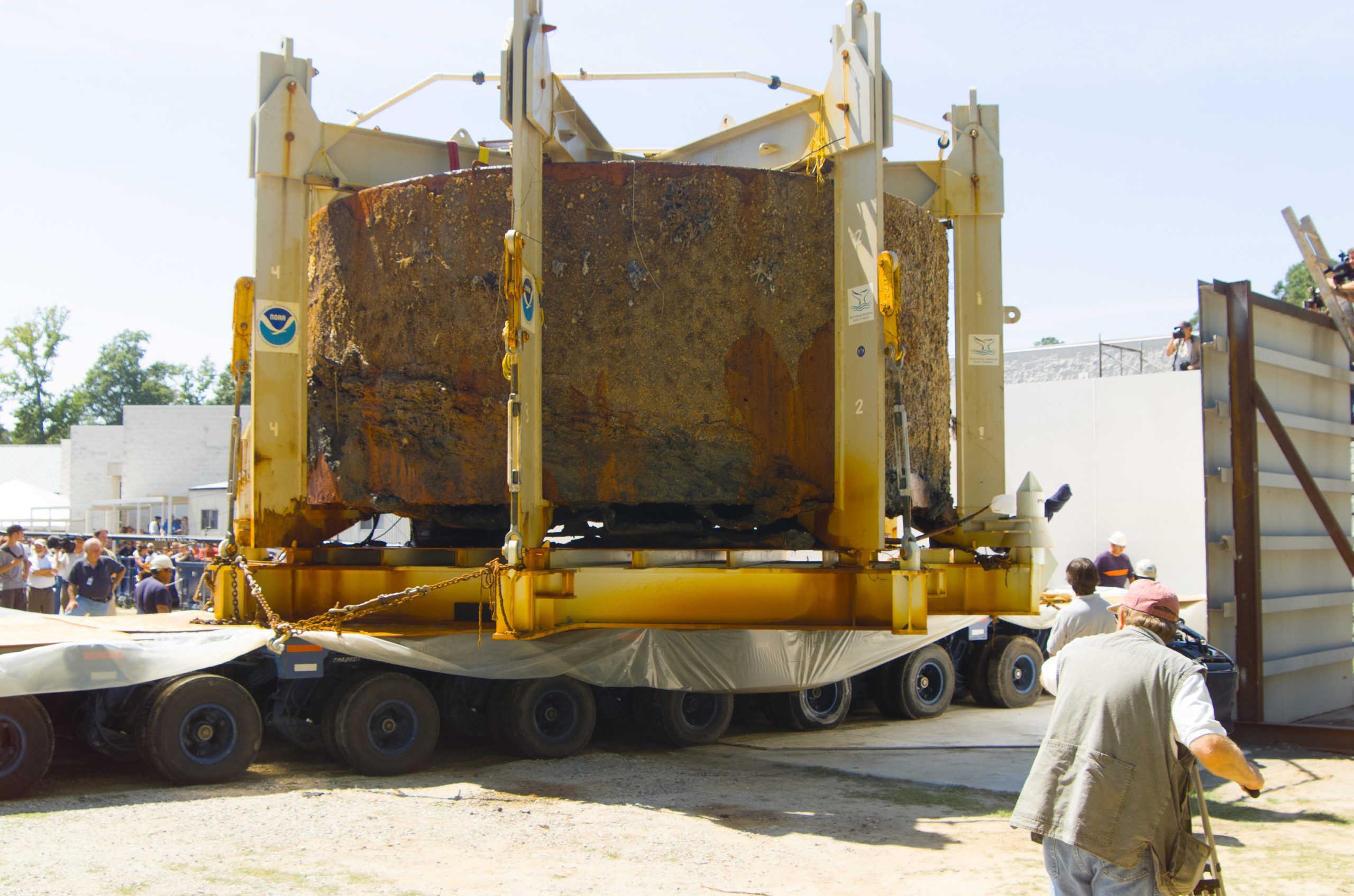
References:
Broadwater, John D. 2012. USS Monitor: A Historic Ship Completes Its Final Voyage. College Station: Texas A&M University Press.
Watts, Gordon P., Jr. 1982. “Investigating the Remains of the USS Monitor: A Final Report on the 1979 Site Testing in The Monitor National Marine Sanctuary.” Harbor Branch Foundation, Inc., Technical Report Number 42
The Mariners’ Museum and Park. 2019. The Monitor’s Discovery & Recovery.https://www.monitorcenter.org/the-monitors-discovery-recovery
